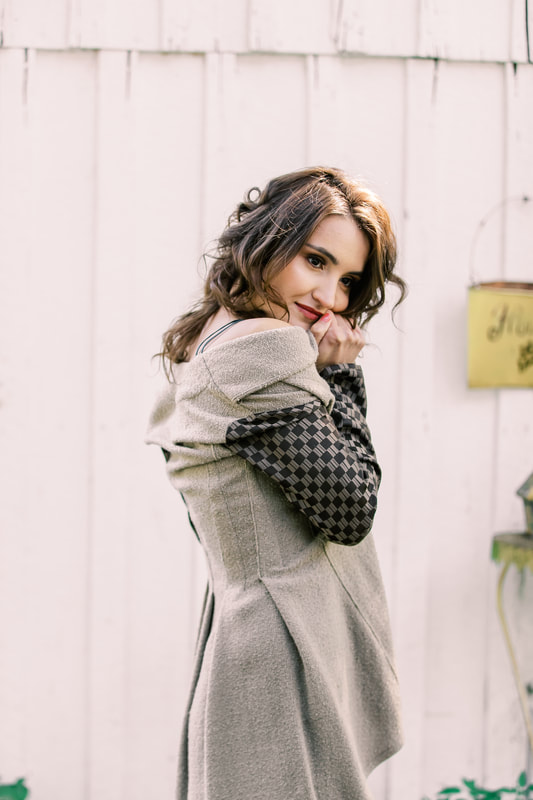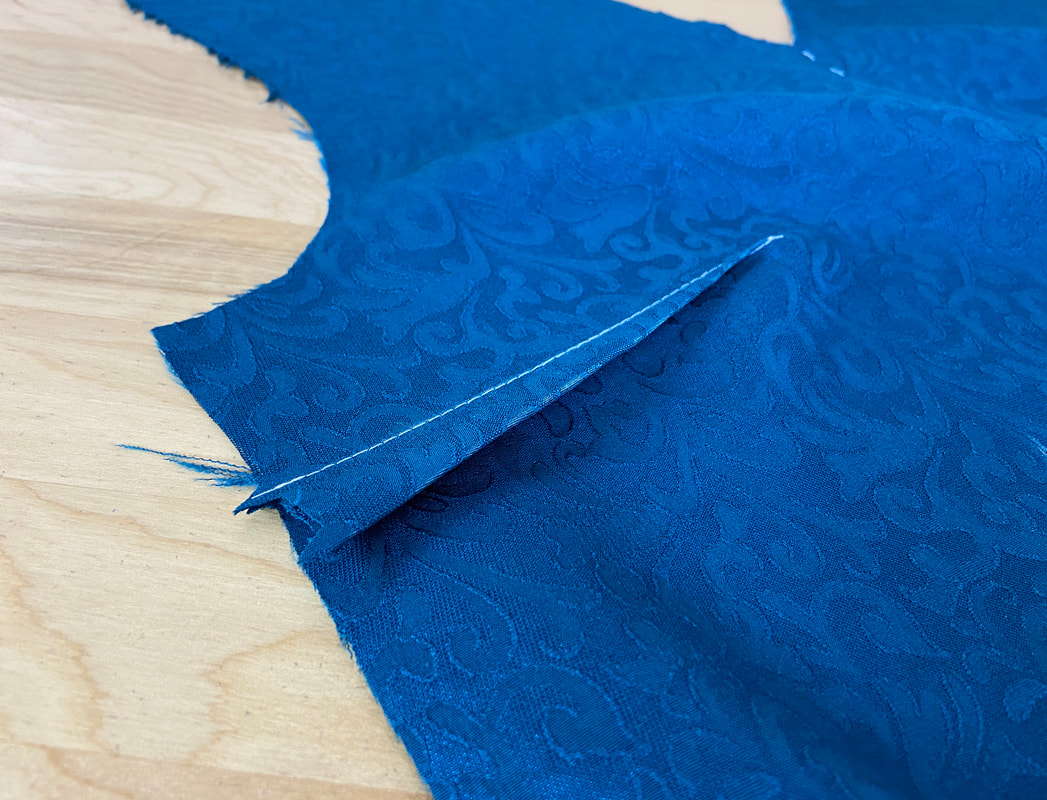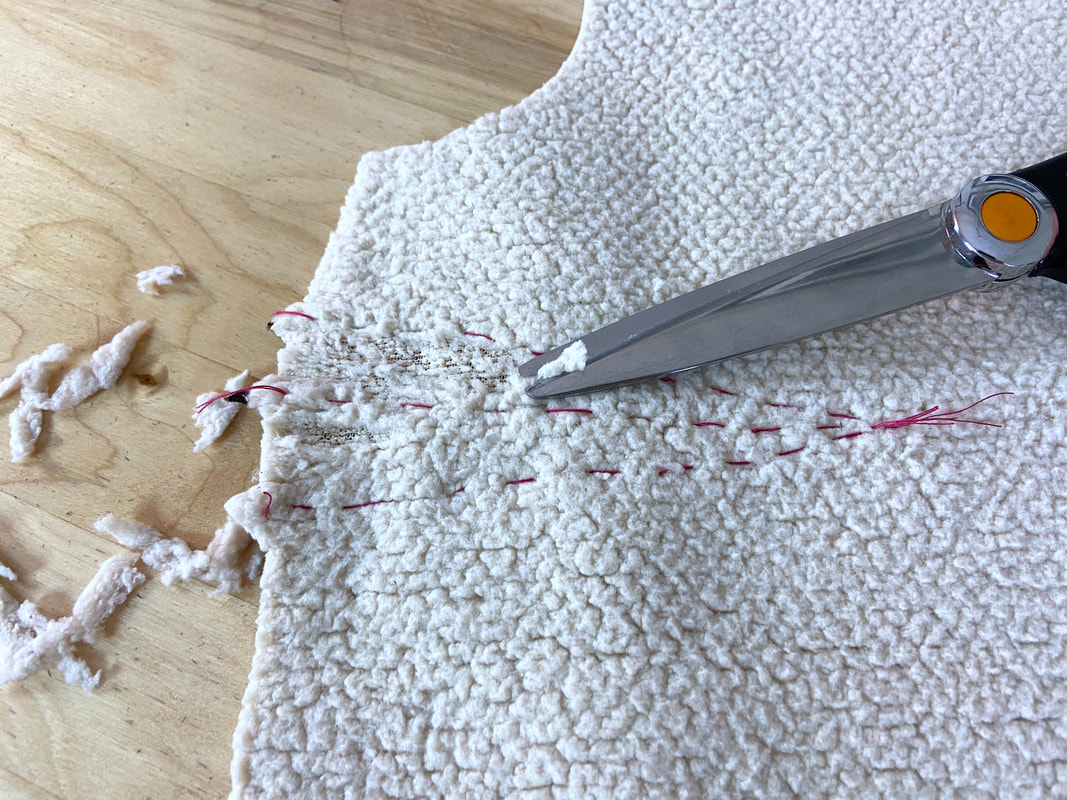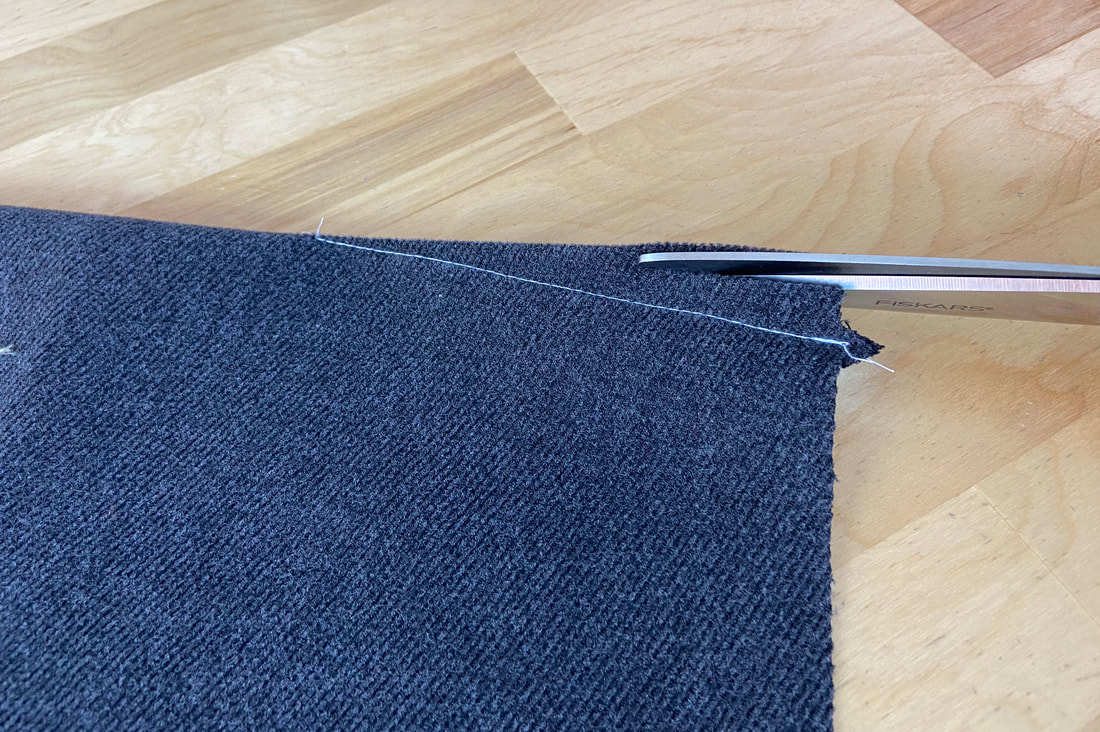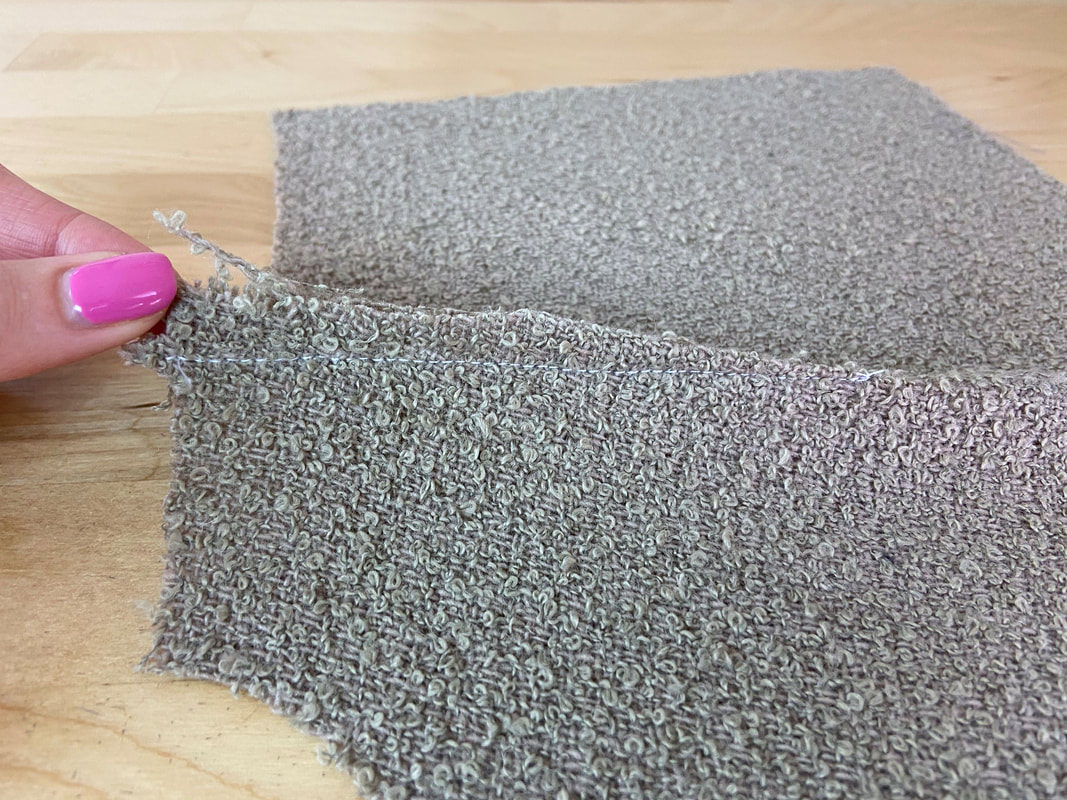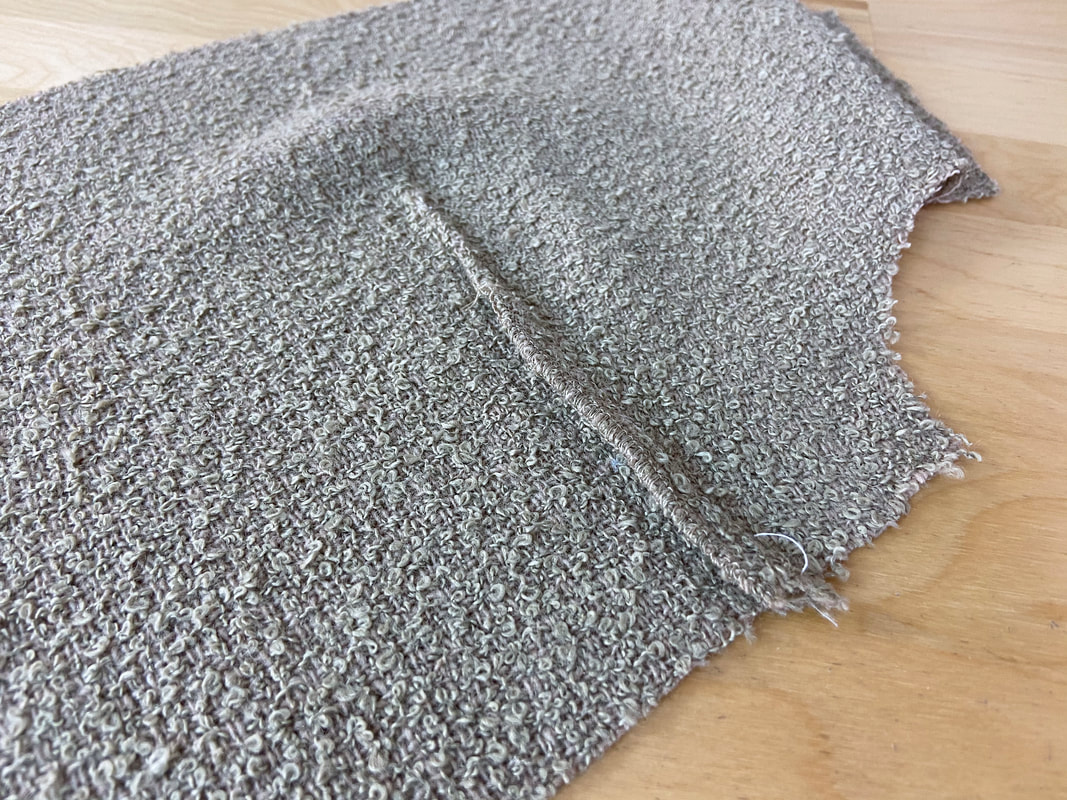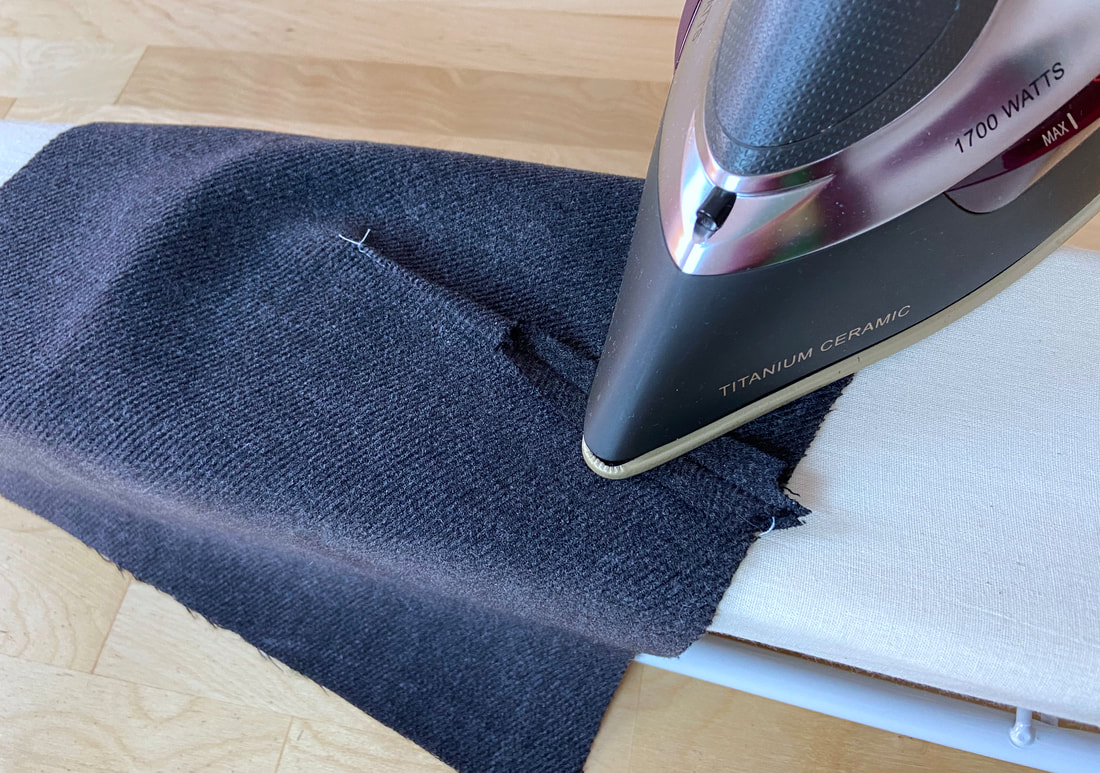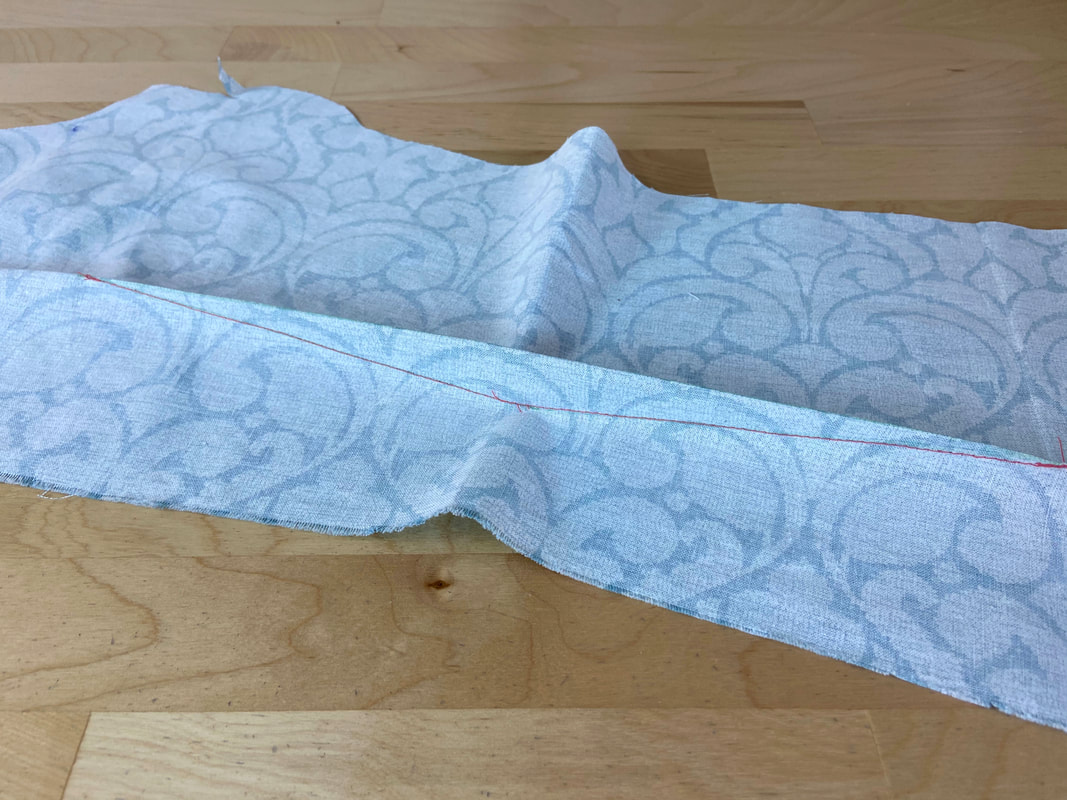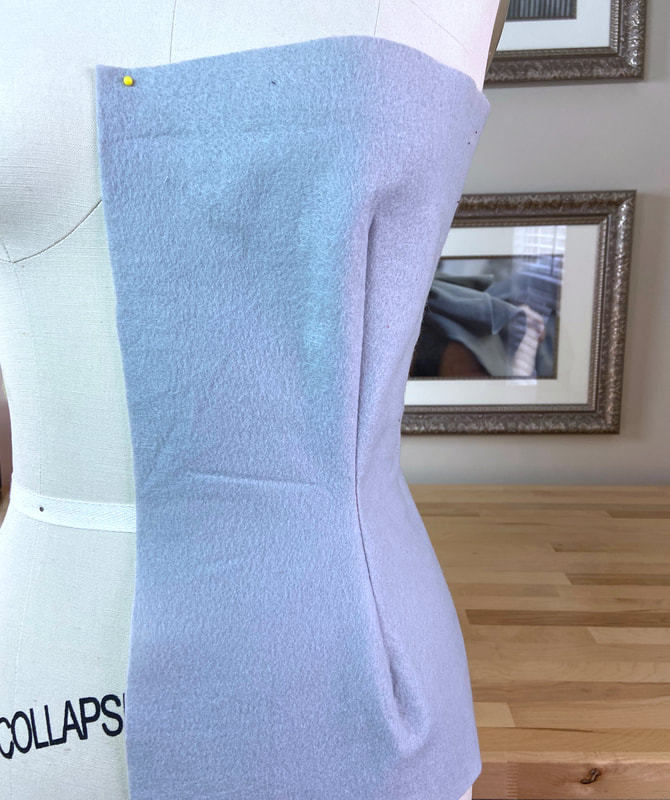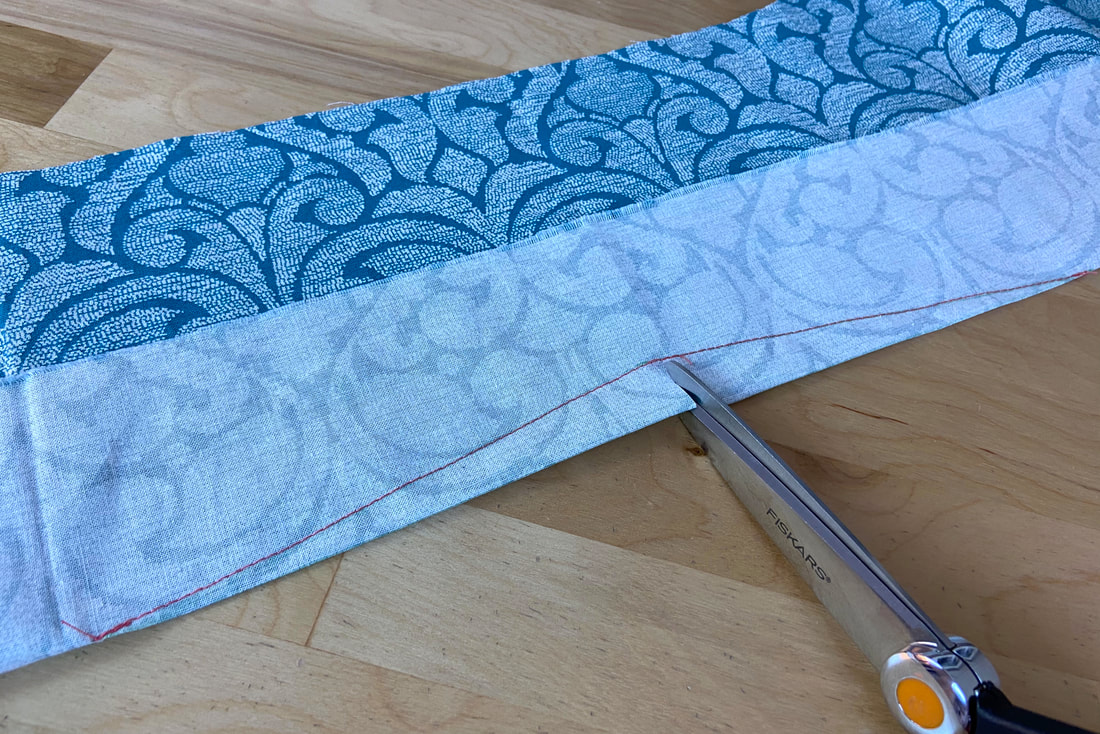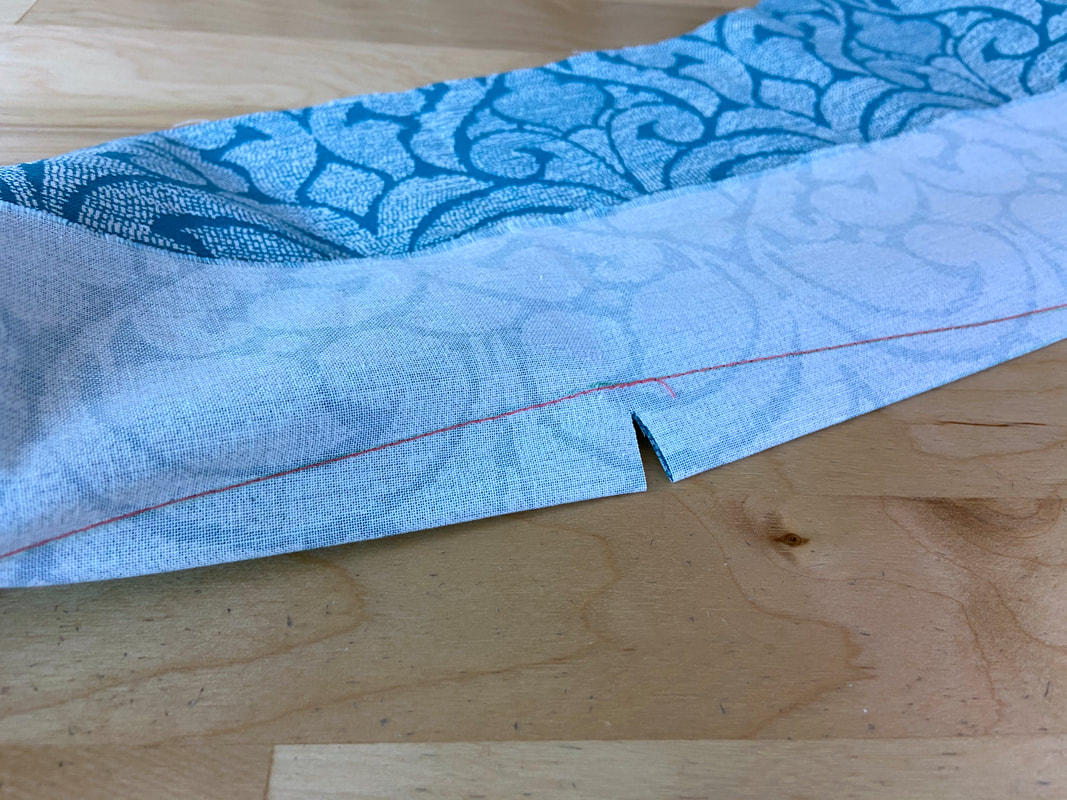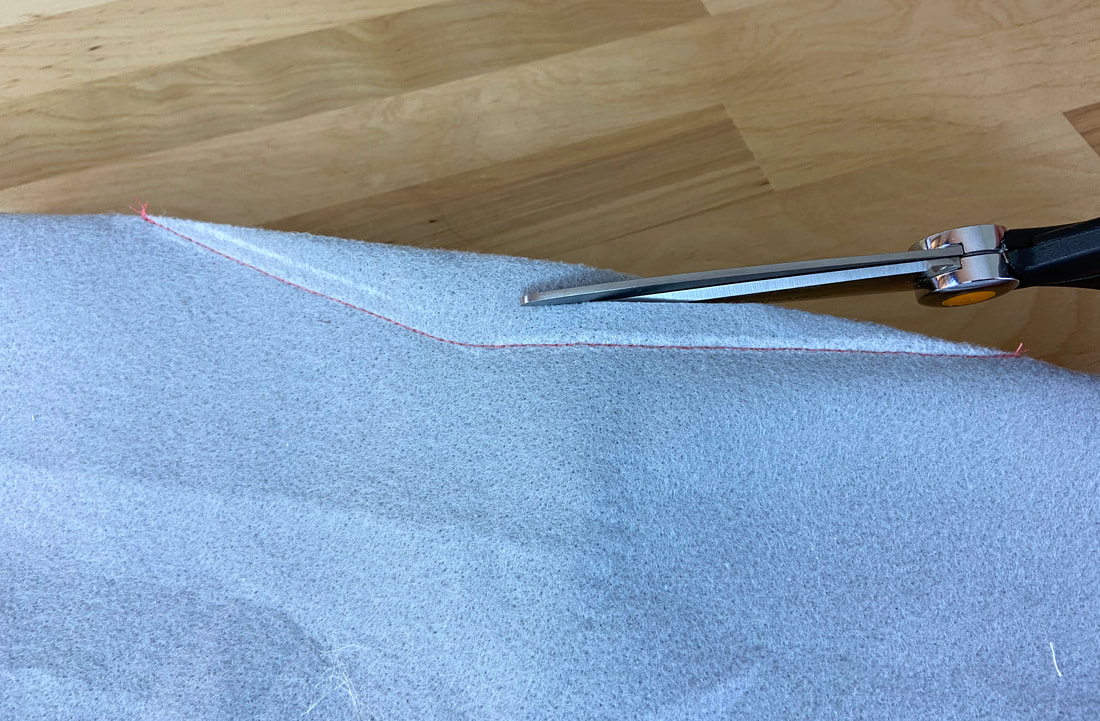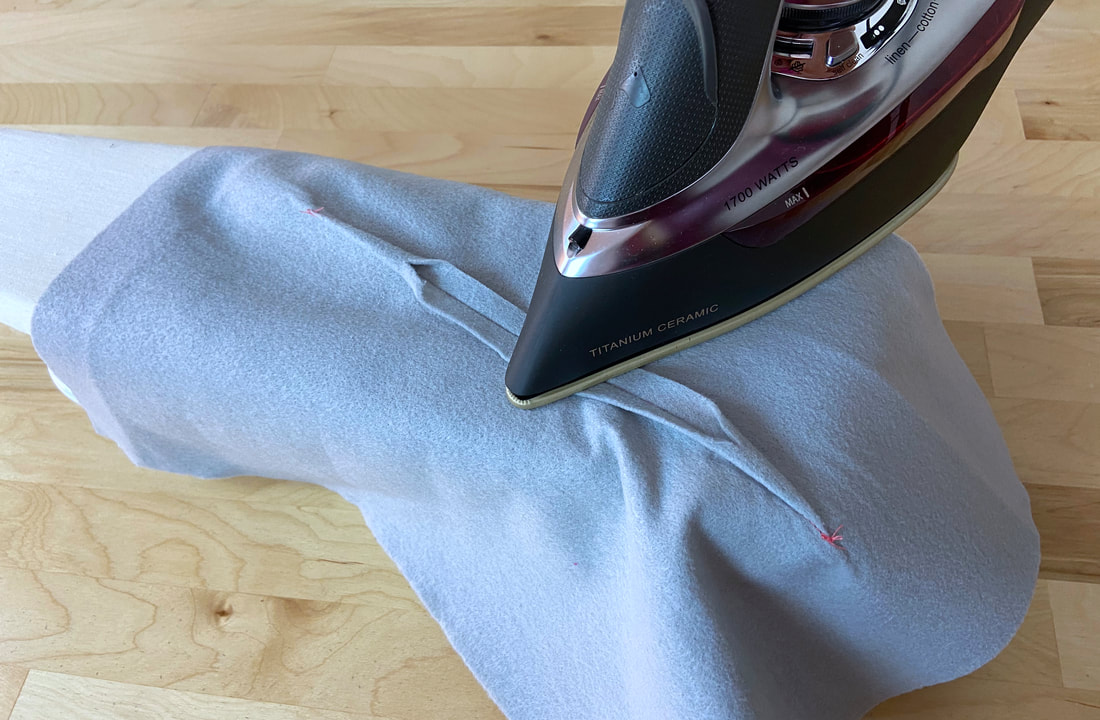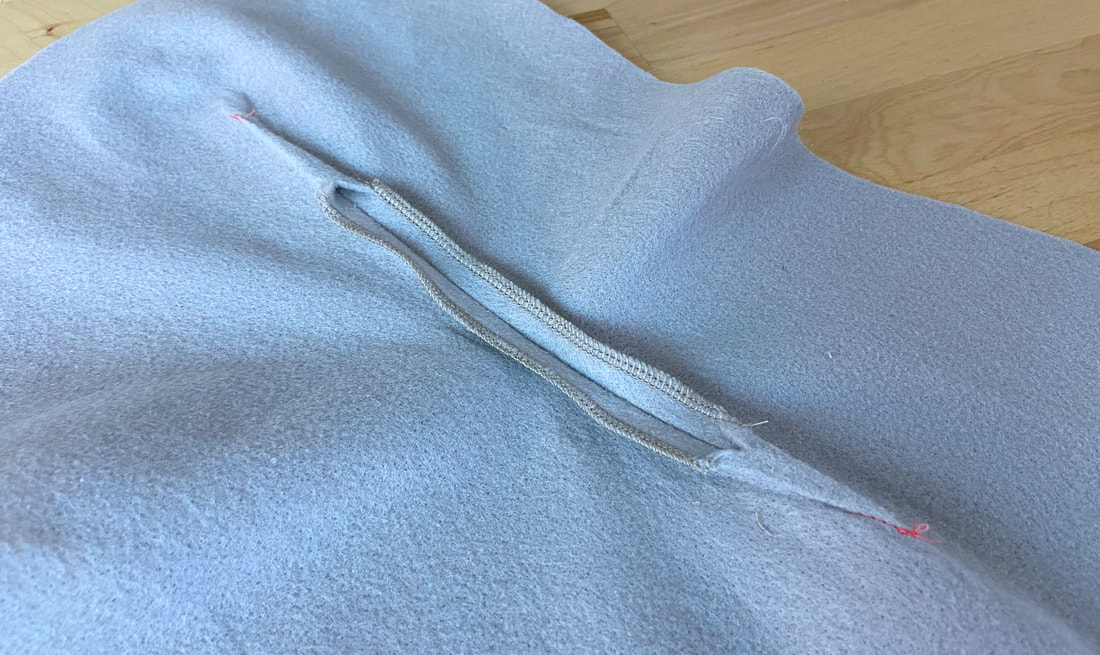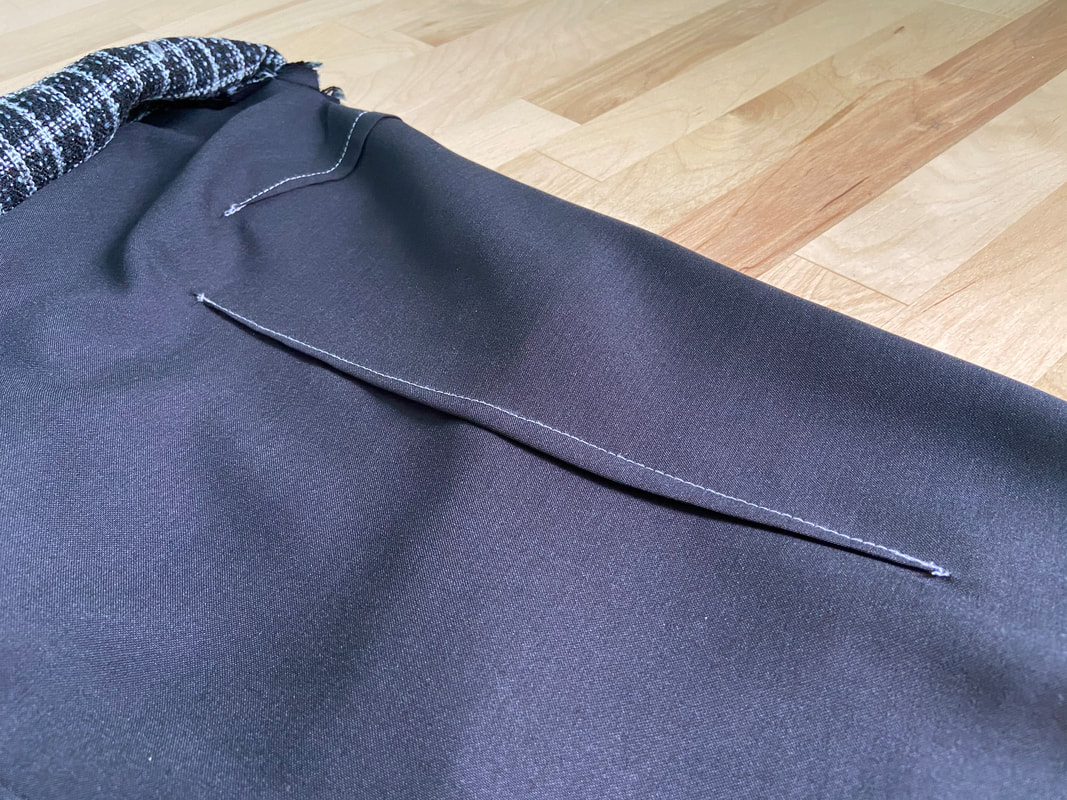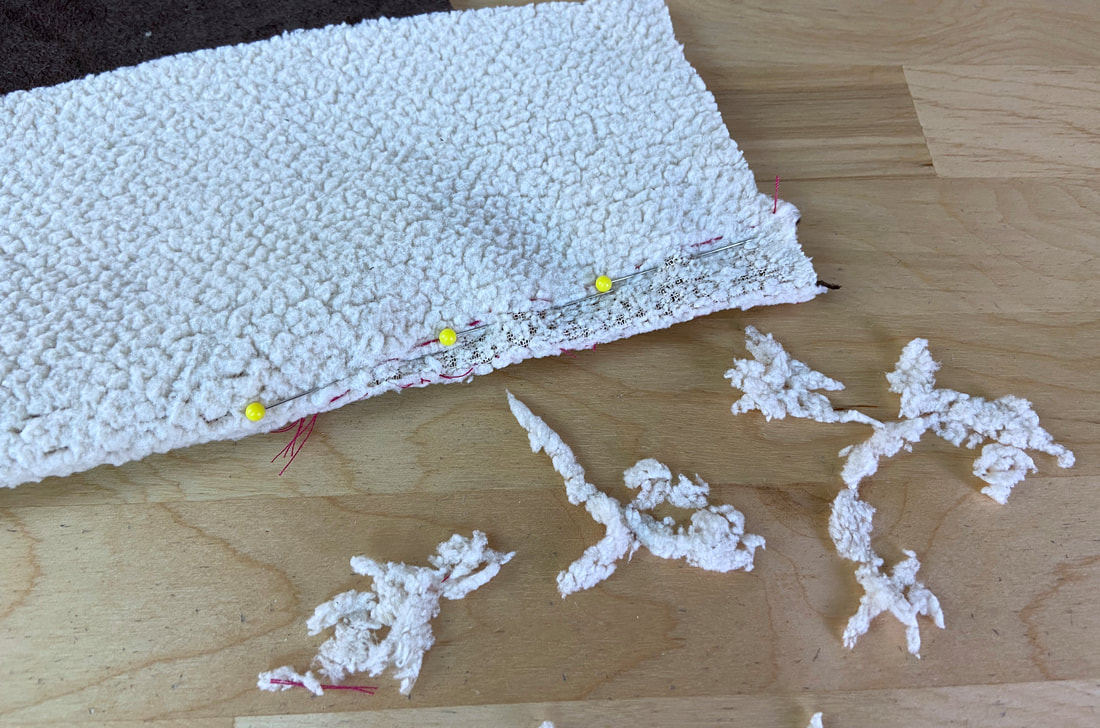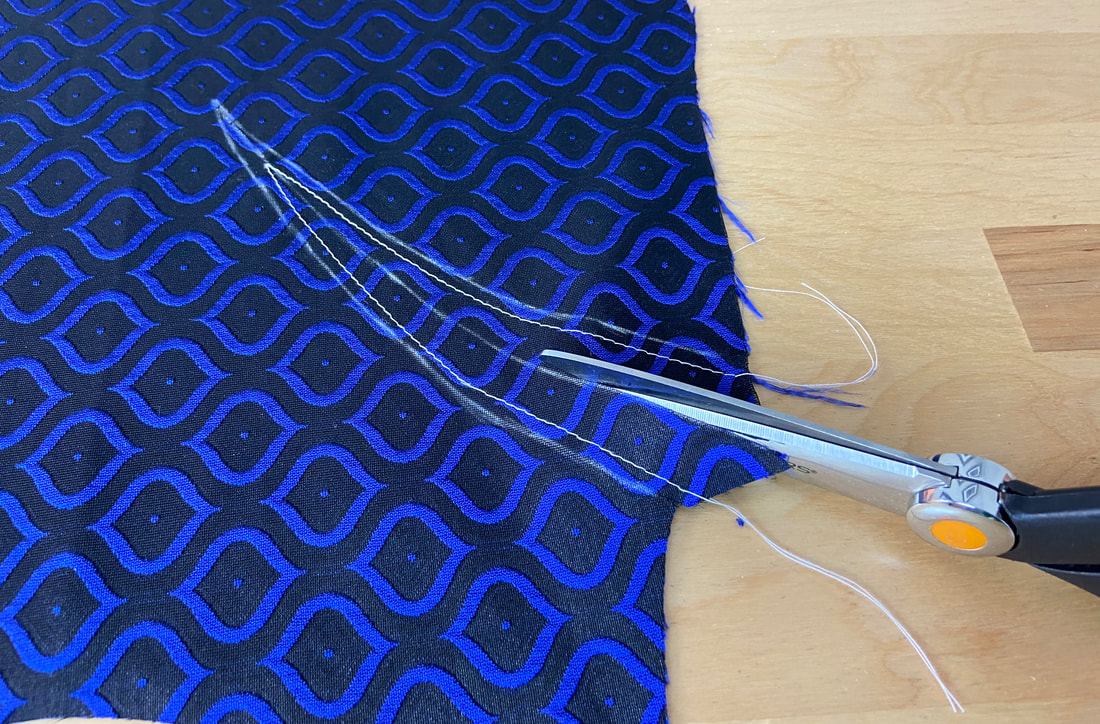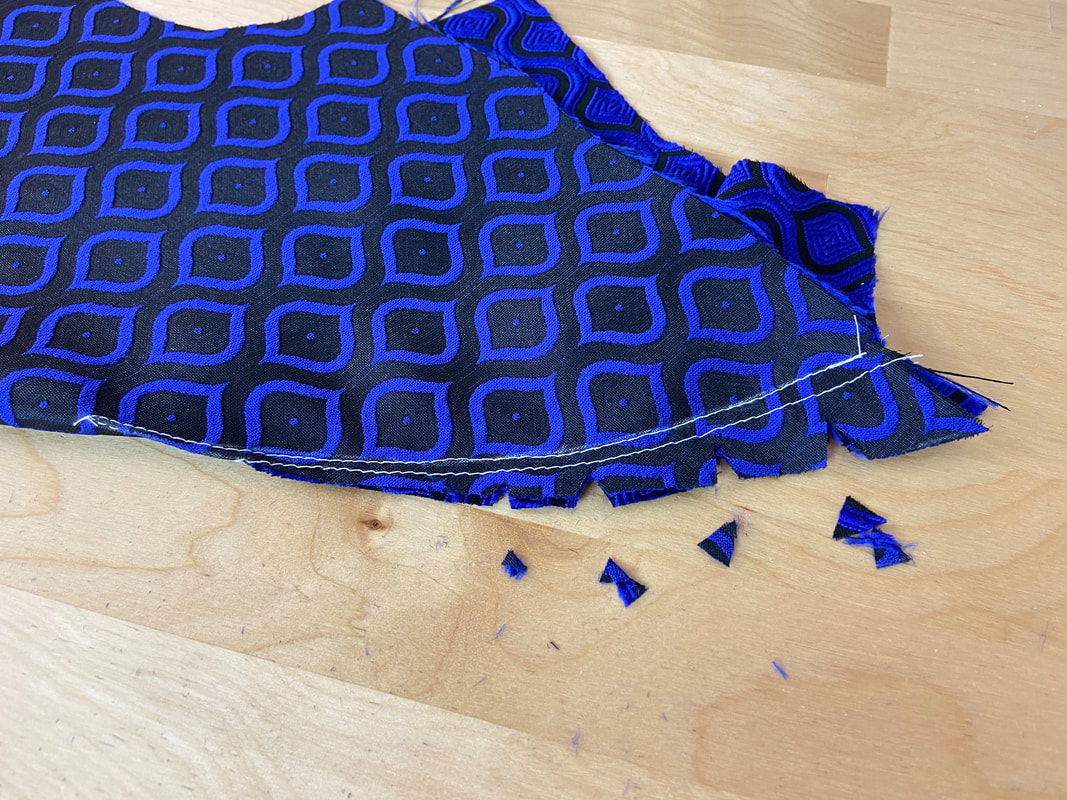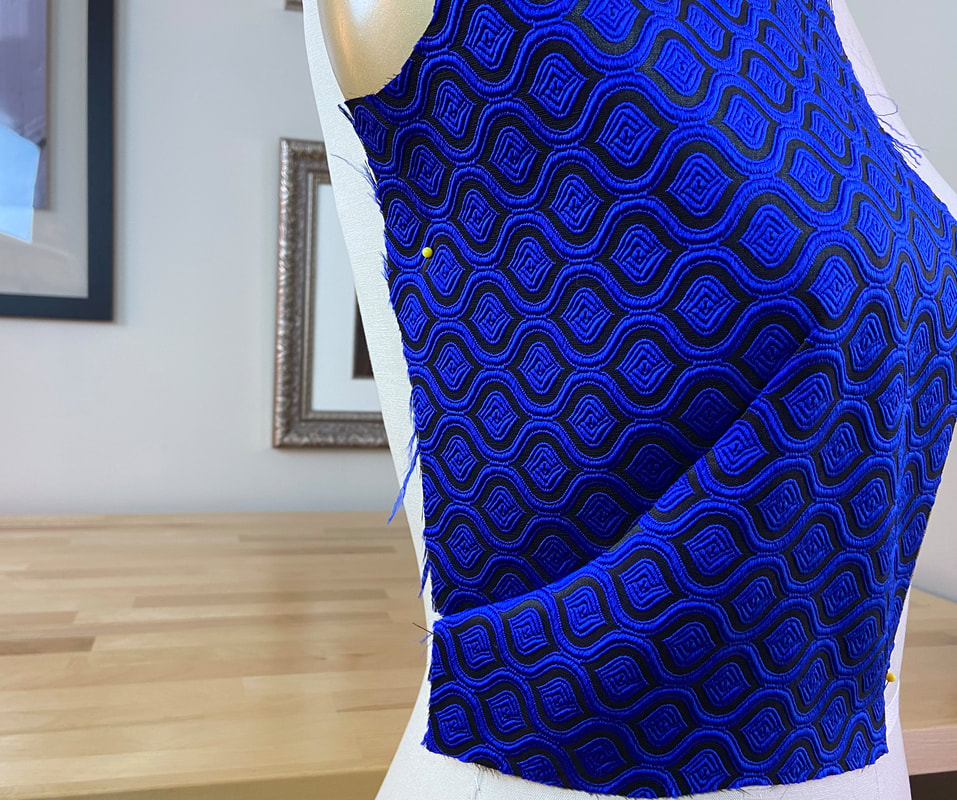In dressmaking, any time you work with fabric excess or intake, there is a risk of causing bulk and/or strain at the narrower areas of the garment.
When it comes to darts specifically, excess should be handled on a case-by-case basis depending of the type of dart and fabric at hand.
While special situations may require that all dart excess be trimmed regardless of the type of dart, it is usually just contour and French darts that cause these tension issues.
Handling Single-Pointed Dart Excess
Let’s start with single-pointed darts. As you may recall, single-pointed darts are those that extend from a seam into a single vanishing point. Single pointed darts are always straight, never curved, and used both on the front and back of a garment. They are primarily located at the bust, waist, upper back and sometimes shoulder blades.
Due to its structure, single-pointed dart excess does not normally require to be trimmed as it lays flat in its corresponding direction without causing the garment any strain. However, some instances require that the dart excess is trimmed in order to minimize bulk.
In the case of high pile fabrics or those that are heavily ornamented, the fabric surface within the dart excess area should be trimmed to minimize thickness.
In some instances, the dart intake may have to be trimmed to about ½” from the dart stitch lines.
For highly fraying fabrics, always apply an overedge finish like a zigzag or serging stitch to the intake’s freshly cut edge.
To increase the smoothness of the finished dart and distribute the dart excess bulk, you may need to press the dart with the trimmed excess open. In this case, when arriving at the vanishing point, fold the excess down in a triangle shape as shown.
Do not trim the dart intake up to the dart's vanishing point as this may weaken the dart during wear and care. When it comes to handling single-pointed dart excess, the goal is not to trim the excess unless it is absolutely necessary.
Handling Contour Dart Excess
Contour darts are those that feature a wide portion of intake in the middle, corresponding to the body’s waistline, and taper into two vanishing points located on opposite ends. As opposed to single-pointed darts, contour darts have a unique structure that often causes tension at the waist if not properly clipped.
Keep in mind that darts are used as a shaping tool for non-stretch, woven garments. Contour darts are used with form fitted styles to help them mold to the waist area. For that reason, the widest dart intake should provide a flexible indent at the waistline.
Due to the fabric’s lack of stretch and the usually larger amount of dart intake, contour darts may cause tension issues at the waist. This tension prevents the fabric and dart seams from laying completely flat.
The best way to fix the issue is to clip the dart excess horizontally right at the middle (largest) portion of the intake.
The slash should end at about ¼” from the dart stitch line as shown. Doing so will allow the top and bottom excess to separate thus creating flexibility in the dart seam.
When working with thick fabrics, contour dart excess may need to be entirely trimmed down, leaving only about ½” of intake. In this case, the excess is usually ironed open and folded down at each vanishing point forming a triangular shape.
As noted above, never slash the excess up to the vanishing point as this will weaken the dart and may cause it to come undone.
For high-fraying fabric, you may need to add an overedge finishing technique such as a zigzag or serging stitch to the excess’ cut edge.
Keep in mind that not all contour darts require trimming and clipping. As a matter of fact, you should leave dart excess untouched if it is not creating tension/strain issues. Fabrics that have some stretch or those with very thin contour dart intake, like the ones on coats and blazers, will usually lay flat and not cause tension in the dart seam. These darts should always be left unclipped.
Another scenario you may encounter pertains to minimizing bulk within the dart intake. This is the case when working with high pile or heavily decorated fabrics. To eliminate unnecessary bulk in these fabrics, it important to trim down the high pile or remove the decorative elements within the dart’s excess area prior to stitching the dart.
Check out this tutorial for a detailed guideline on this process: Sewing Darts With Decorative/Beaded Fabrics
Handling And Removing French Dart Excess
French darts are diagonal, curved darts that extend from the side seam inwards. They can only be located on the front of the garment.
Since French darts are curved, they will never lay flat unless the dart intake is trimmed and notched for tension release.
Curved French darts are also very difficult to align and sew unless the excess is cut beforehand. A staystitch applied within the dart’s excess prior to cutting it will play an important role in maintaining the dart’s durably and structure.
Once the French dart is stitched, notch wedges are clipped into the dart excess (up to the staystitch line) allowing the curved dart intake to lay flat in the finished dart application.
To learn more about staystitching check out this tutorial: Staystitching
For a detailed breakdown on clipping the curved edges for tension release, check out this tutorial: Notching/Clipping Seam Allowance for Tension Release

